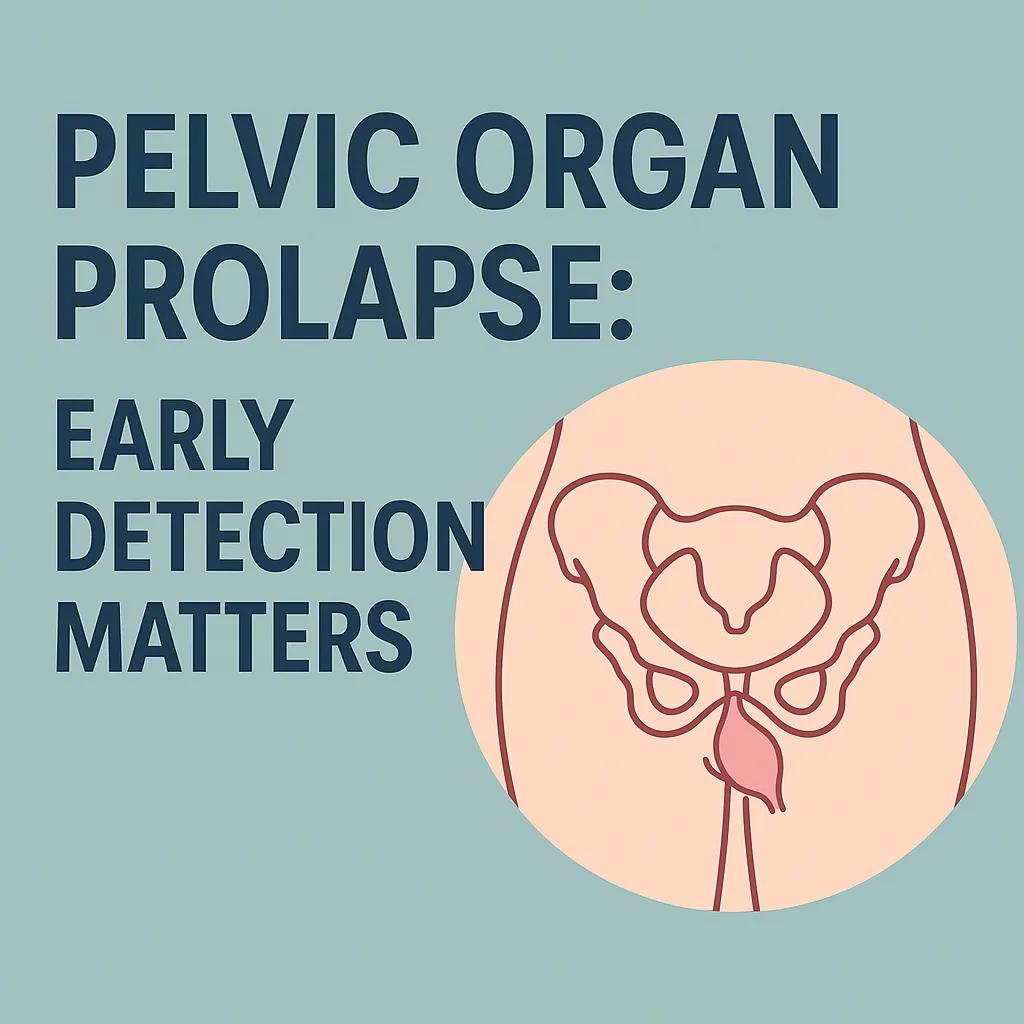
Seeing Is Believing: The Benefits of Ultrasound for Patients and Providers

Pelvic Organ Prolapse: Why Early Detection Matters
Pelvic Organ Prolapse: Why Early Detection Matters
Pelvic Organ Prolapse (POP) is one of those conditions that’s rarely talked about—but it should be. It affects millions of women worldwide, yet many suffer in silence, attributing their symptoms to “just getting older.” The truth is, POP is common, but it’s not normal—and early detection can make all the difference in treatment, comfort, and long-term health.

What Is Pelvic Organ Prolapse?
Pelvic Organ Prolapse occurs when the muscles and tissues supporting the pelvic organs (such as the bladder, uterus, or rectum) weaken or stretch, causing one or more of these organs to drop into or outside of the vaginal canal.
Think of the pelvic floor like a hammock—when it’s firm, it holds everything in place. But if it loosens or tears, the organs above it start to sag.
Common Causes
Several factors increase the risk of POP:
Childbirth (especially vaginal deliveries)
Aging and menopause, which reduce collagen and muscle tone
Chronic constipation or heavy lifting, which increase pelvic pressure
Obesity, which adds constant strain to the pelvic floor
Genetic factors, as some women naturally have weaker connective tissue
Early Signs You Shouldn’t Ignore
The early symptoms of prolapse can be subtle but are crucial to catch:
A feeling of heaviness, pressure, or fullness in the pelvis
A visible or palpable bulge at the vaginal opening
Difficulty urinating, or the feeling of incomplete emptying
Pain during intercourse
Lower back or pelvic discomfort after standing for long periods
Women often dismiss these signs, assuming they’re part of aging or recovery after childbirth—but catching them early can prevent worsening prolapse and invasive treatments later.
Why Early Detection Is Crucial
Early detection opens up less invasive, more effective options:
Pelvic floor physical therapy can often reverse or halt progression in mild cases.
Lifestyle modifications, like managing weight, treating constipation, and avoiding heavy lifting, can relieve pressure.
Pessary devices, small supports inserted into the vagina, can help maintain organ position without surgery.
Surgical interventions, if needed, are far more successful when performed before the prolapse becomes severe.
The earlier POP is diagnosed, the easier it is to manage—and the better the long-term outcomes for bladder function, sexual health, and overall quality of life.

How to Get Checked
If you suspect something’s off, don’t wait. A gynecological or urogynecological exam can confirm whether prolapse is present and determine its severity. Modern imaging, like pelvic ultrasound or MRI, provides a clear view of the structures involved.
Screening doesn’t have to be uncomfortable or invasive—it’s a simple step that can save you years of pain, embarrassment, or surgical recovery.
Empowering Women Through Awareness
Pelvic Organ Prolapse isn’t just a “women’s issue.” It’s a public health issue. Awareness, early diagnosis, and open conversations can transform lives. When women feel empowered to talk about their bodies and seek help early, the stigma fades—and healing begins.
Bottom line: Pelvic Organ Prolapse is treatable, especially when caught early. Don’t ignore the signs. Listen to your body, talk to your doctor, and take charge of your pelvic health.
For those seeking expert ultrasound services, Atlanta Ultrasound offers quick, efficient, and comprehensive scans. Our team of skilled professionals is dedicated to providing you with the clarity and care you need.
Contact us today to schedule your ultrasound scan and take a decisive step towards understanding your health.
📍 Multiple locations in Metro Atlanta, GA
📞 Contact: 678-590-3300
🌐 Website:www.atlantaultrasound.com
Disclaimer: The content of this blog post, authored by a sonographer, is provided for educational and informational purposes only. It is not intended as medical advice, nor should it substitute for professional medical consultation, diagnosis, or treatment. Always seek the advice of your physician or other qualified health providers with any questions you may have regarding a medical condition or health concerns.
